Judy Jin
SEE-OoD: Supervised Exploration For Enhanced Out-of-Distribution Detection
Oct 12, 2023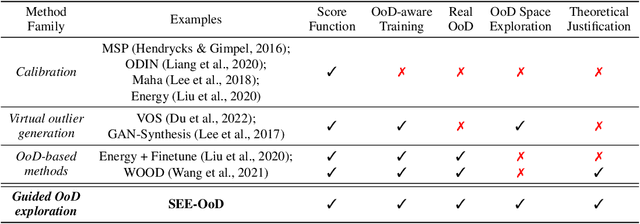

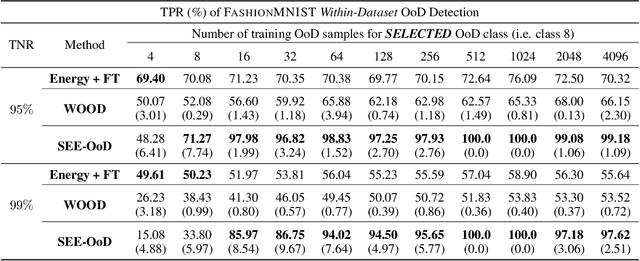
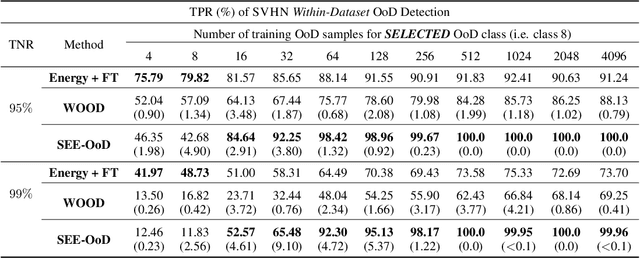
Abstract:Current techniques for Out-of-Distribution (OoD) detection predominantly rely on quantifying predictive uncertainty and incorporating model regularization during the training phase, using either real or synthetic OoD samples. However, methods that utilize real OoD samples lack exploration and are prone to overfit the OoD samples at hand. Whereas synthetic samples are often generated based on features extracted from training data, rendering them less effective when the training and OoD data are highly overlapped in the feature space. In this work, we propose a Wasserstein-score-based generative adversarial training scheme to enhance OoD detection accuracy, which, for the first time, performs data augmentation and exploration simultaneously under the supervision of limited OoD samples. Specifically, the generator explores OoD spaces and generates synthetic OoD samples using feedback from the discriminator, while the discriminator exploits both the observed and synthesized samples for OoD detection using a predefined Wasserstein score. We provide theoretical guarantees that the optimal solutions of our generative scheme are statistically achievable through adversarial training in empirical settings. We then demonstrate that the proposed method outperforms state-of-the-art techniques on various computer vision datasets and exhibits superior generalizability to unseen OoD data.
A Continual Learning Framework for Adaptive Defect Classification and Inspection
Mar 16, 2022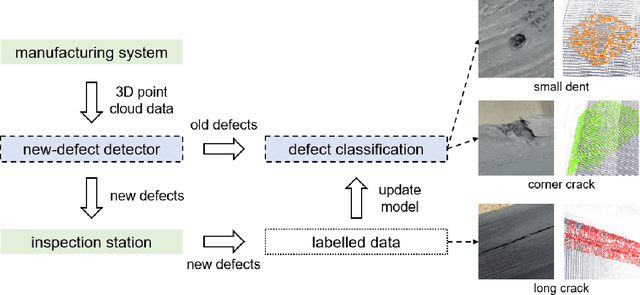



Abstract:Machine-vision-based defect classification techniques have been widely adopted for automatic quality inspection in manufacturing processes. This article describes a general framework for classifying defects from high volume data batches with efficient inspection of unlabelled samples. The concept is to construct a detector to identify new defect types, send them to the inspection station for labelling, and dynamically update the classifier in an efficient manner that reduces both storage and computational needs imposed by data samples of previously observed batches. Both a simulation study on image classification and a case study on surface defect detection via 3D point clouds are performed to demonstrate the effectiveness of the proposed method.
Precision Radiotherapy via Information Integration of Expert Human Knowledge and AI Recommendation to Optimize Clinical Decision Making
Feb 09, 2022
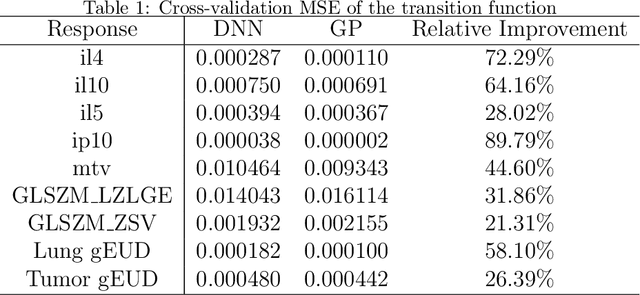

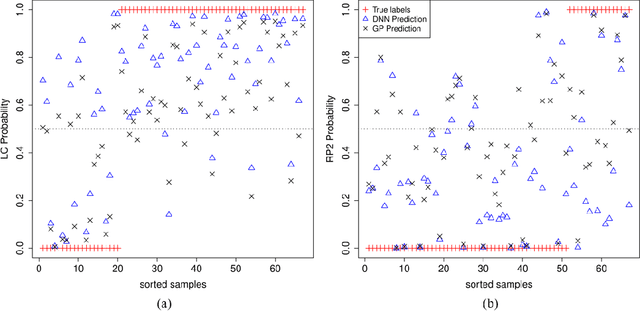
Abstract:In the precision medicine era, there is a growing need for precision radiotherapy where the planned radiation dose needs to be optimally determined by considering a myriad of patient-specific information in order to ensure treatment efficacy. Existing artificial-intelligence (AI) methods can recommend radiation dose prescriptions within the scope of this available information. However, treating physicians may not fully entrust the AI's recommended prescriptions due to known limitations or when the AI recommendation may go beyond physicians' current knowledge. This paper lays out a systematic method to integrate expert human knowledge with AI recommendations for optimizing clinical decision making. Towards this goal, Gaussian process (GP) models are integrated with deep neural networks (DNNs) to quantify the uncertainty of the treatment outcomes given by physicians and AI recommendations, respectively, which are further used as a guideline to educate clinical physicians and improve AI models performance. The proposed method is demonstrated in a comprehensive dataset where patient-specific information and treatment outcomes are prospectively collected during radiotherapy of $67$ non-small cell lung cancer patients and retrospectively analyzed.
The Internet of Federated Things : A Vision for the Future and In-depth Survey of Data-driven Approaches for Federated Learning
Nov 09, 2021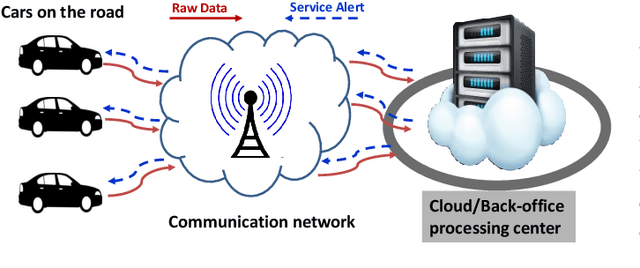
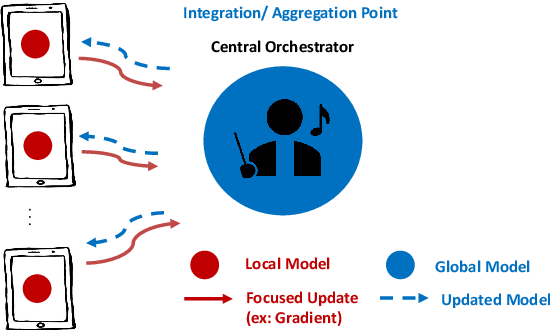
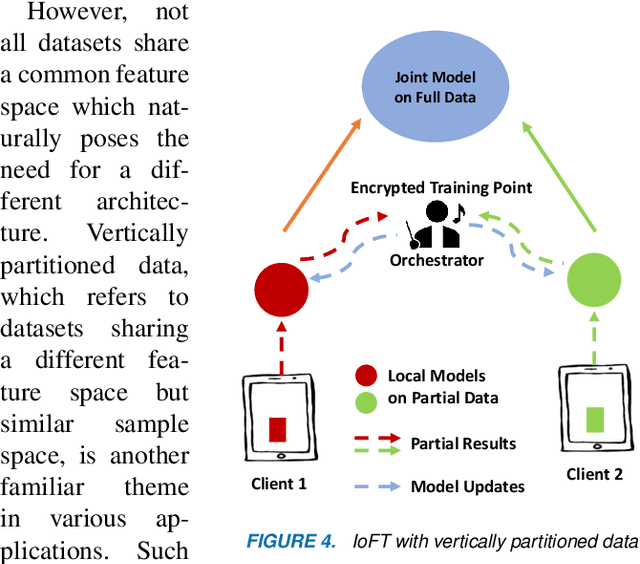
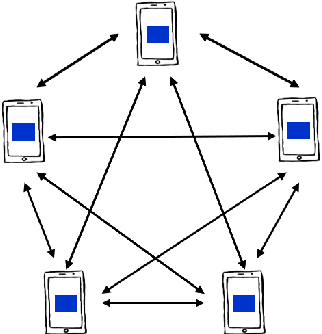
Abstract:The Internet of Things (IoT) is on the verge of a major paradigm shift. In the IoT system of the future, IoFT, the cloud will be substituted by the crowd where model training is brought to the edge, allowing IoT devices to collaboratively extract knowledge and build smart analytics/models while keeping their personal data stored locally. This paradigm shift was set into motion by the tremendous increase in computational power on IoT devices and the recent advances in decentralized and privacy-preserving model training, coined as federated learning (FL). This article provides a vision for IoFT and a systematic overview of current efforts towards realizing this vision. Specifically, we first introduce the defining characteristics of IoFT and discuss FL data-driven approaches, opportunities, and challenges that allow decentralized inference within three dimensions: (i) a global model that maximizes utility across all IoT devices, (ii) a personalized model that borrows strengths across all devices yet retains its own model, (iii) a meta-learning model that quickly adapts to new devices or learning tasks. We end by describing the vision and challenges of IoFT in reshaping different industries through the lens of domain experts. Those industries include manufacturing, transportation, energy, healthcare, quality & reliability, business, and computing.
 Add to Chrome
Add to Chrome Add to Firefox
Add to Firefox Add to Edge
Add to Edge